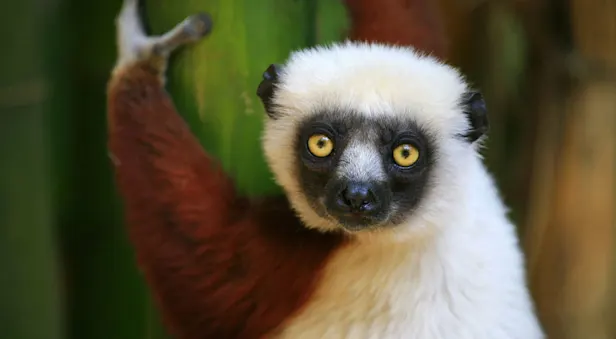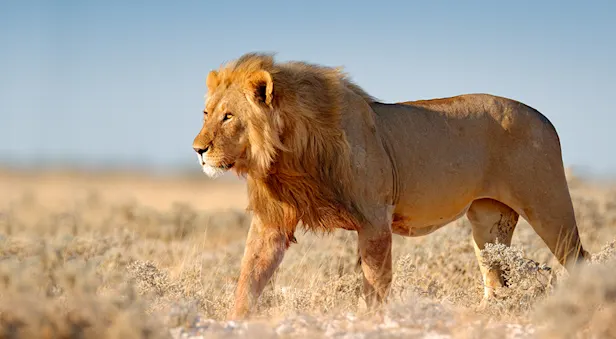What to Pack for Your Madagascar Adventure
The following packing list contains general recommendations for a Madagascar safari. If you are currently booked on a safari with Nat Hab, please consult your pre-departure materials for the most up-to-date packing list specific to your trip, as packing recommendations vary based on the season. You will receive these pre-departure materials 60-90 days before your departure.
Items indicated in color below are typically available in the Nat Hab Gear Store. Please note that due to global supply chain issues beyond our control, we cannot guarantee that every item will always be in stock.
Adventure Guidelines
A water-resistant daypack/backpack to carry cameras and other items is very handy for daily activities.
It is suggested (although not required) that you do not wear bright- or white-colored clothing, as it can sometimes spook the animals. In addition, army camouflage uniforms and hats are forbidden (although khaki is fine).
We ask that you refrain from bringing hair dryers, irons, radios, excess clothing or toiletries, etc. This adventure is quite casual, and we recommend that you pare your luggage down to the basics. Also, please remember not to pack your essentials in your checked luggage in case it is delayed or lost by the airlines.
Seasonality:
— During the dry season (May to September), average maximum temperatures vary from about 86°F in coastal areas to around 77°F on the Hauts-Plateaux (central highlands that includes Antananarivo). In Antananarivo and other highland areas, temperatures during the winter dry season can drop to 50°F and even lower during the night. During this time, the Hauts-Plateaux can be cold and windy, with freezing showers. It is not uncommon to experience a light drizzle or rain while hiking in the rainforests of Ranomafana at any time of year, and the climate is damp and cool, warming through the day.
— Late September through November are generally hot in most areas with temperatures often reaching 100°F or above during the day and remaining in the mid-70s°F into the night.
— The least rainfall throughout Madagascar’s western region and highlands is from July to October. Nights and early mornings can be quite cool with temperate to warm days.
— Due to the altitude in the Hauts-Plateaux, temperatures remain quite chilly until mid-October. Late October to mid-November tend to be hot.
Clothing
We highly recommend dressing in layers for optimal comfort throughout the day.
Lightweight neck gaiter (included in your pre-departure package)
—Provides sun, wind and/or dust protection.Silk, wool or polypropylene long underwear for layering (tops & bottoms)
Lightweight, waterproof rain jacket/poncho and rain pants
— It can rain at any time in the central highlands. Good rain gear may also come in handy on the night walks.1 sweater or fleece pullover
Waterproof/Gore-Tex® hiking boots or trail hiking shoes
— As the rain forest treks can be wet and muddy in areas, we recommend a waterproof or Gore-Tex®-lined shoe to keep your feet dry.Casual shoes/Teva-type sandals (optional)
— In addition to a good pair of broken-in hiking boots/shoes, you may want a pair of tennis/walking shoes and/or Teva-style sandals for activities that do not involve hiking. We will take many walks through the sand as well as boating trips with the possibility of feet getting wet as we enter and exit the boats, making Tevas a good choice.Light hiking gaiters (optional)
— To keep water and dirt out of shoes in the highlands where conditions may be moist.Leech socks (optional)
— We can encounter small leeches in Andasibe-Mantadia and Ranomafana national parks during our treks.3-4 T-shirts or polo-style shirts
2 pairs of shorts (optional)
— For Isalo National Park and possibly Anjajavy Reserve.3–4 pairs of long pants (quick-dry material)
— Some areas can be muddy, and you may not be able to do laundry until Day 7.Nylon, zip-off pants are a good alternative to long pants as they are perfect for cool mornings and hotter afternoons. You may not need to bring shorts if you are bringing zip-off pants.
Swimsuit (optional)
— Some of the lodges have swimming pools, and it is possible to swim in the ocean at Anjajavy.Warm sleepwear
— It can get be chilly at night in the Hauts-Plateaux as well as in Andasibe-Mantadia and Ranomafana.Hat with brim (for sun protection)
Socks
— Moisture-resistant/moisture-wicking are preferred for longer walks and hikes. Smartwool is a comfortable brand.Undergarments
Polypropylene or silk thermal underwear—tops and bottoms (for the cooler months of July through mid-September)
Additional Items
Cash
— For discretionary gratuities (you may want to bring envelopes for discreet presentation).
— For personal spending (souvenirs, Internet use, or food and beverages not included in your trip fee)Binoculars
— Binoculars are definitely a must! We strongly suggest each guest bring his or her own pair of binoculars as you will be using them continuously. If possible, we highly recommend investing in a good quality pair. Initially, the cost may be higher, but it will enhance your wildlife viewing experience. You will get the most out of them if you practice using them at home and make a habit of having them with you regularly on the adventure. Waterproof binoculars work well but are not required.LED headlamp with spare bulb and plenty of spare batteries as these are hard to obtain in Madagascar
— For night walks and possible power outages or dim lighting in hotel rooms.
— A flashlight will work; however, we strongly recommend a headlamp, which will keep your hands free.Battery-operated alarm clock/wristwatch or smartphone
— Some of the accommodations do not have clocks or phones in the rooms, so wake-up calls are not possible, and some days on our itinerary require early wake-up times.Reusable water bottle (included in your pre-trip package)
—In our continuing effort to operate our adventures with as little impact on the environment as possible, you will receive a reusable water bottle (unless you opted out on your Booking Form) to take with you on your adventure. We will provide drinking water throughout the adventure for you to refill your bottle. By doing this, you will avoid using multiple disposable plastic bottles.Insect repellent and anti-itch ointment
— Repellents containing DEET are the most effective against mosquitoes, but please be aware that DEET is a very strong ingredient that can damage plastics, clothing and equipment.Outlet adapter and/or power converter (see “Electricity” section of your Pre-Departure Briefing)
Sunglasses (with U.V. filter and secure strap)
Earplugs
Shampoo, conditioner and soap/body wash
— These are provided free of charge at all accommodations on our scheduled trip, so you need to bring these items only if you wish to use a specific brand.
— Some accommodations used on extensions do not provide all of these items, and conditioner is less likely to be provided than shampoo and soap.Laundry detergent (if you wish to wash some clothing by hand)
Toothbrush and toothpaste
Deodorant
Brush or comb
Sunscreen and lip balm (at least SPF15)
— You may want to consider reef-safe sunscreens to protect the delicate underwater environment if you are planning to snorkel.
— Prescription medications and favorite remedies
— For headaches, colds, upset stomach, skin irritations, diarrhea, etc.
— If you are prone to motion sickness, we HIGHLY RECOMMEND bringing your favorite remedy for long drives on windy roads.Electrolyte/flavor crystal packets (optional)
— Can be added to water to replace fluids in case of intestinal illness and/or enhance the taste to encourage hydration.Prescription glasses/contact lenses
Hand sanitizer and/or hand wipes
Reusable, waterproof bags
— Several sizes for wet or dirty clothing and to protect camera equipment.Hiking poles (optional)
— We will supply hiking poles for each traveler on this adventure as they are highly recommended if you are not comfortable with walks on steep, slippery and uneven terrain; however, you may bring your own, if you wish.
— If you are bringing hiking poles, they must be able to fit in your check-in luggage, as you will not be allowed to carry them on the plane.
Header Credit: John Holahan


























